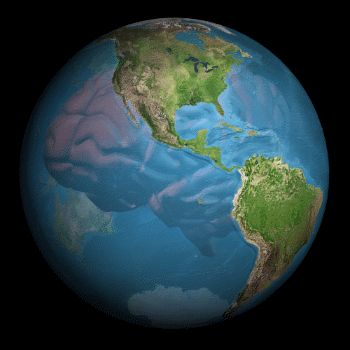Kill the Fed and Restore Gold
Oscar B. Johannsen
[Reprinted from Fragments, July-September
1981]
Possibly the least popular official today in the gargantuan
monstrosity known as the United States Government is the Chairman of
the Federal Reserve System.
All manner of politicians, columnists, and economic soothsayers have
willingly joined in a chorus of denunciation of this hapless
individual. By so doing, these detractors drape around themselves a
mantle of virtuous regard for their fellow citizens, for they point
the finger of blame on him as the unfeeling wretch who is keeping
interest rates high.
While he is the victim of all this calumny, little or none of it is
directed against the institution of which he is the head -- the
Federal Reserve System, popularly known as the Fed.
It is the nation's central bank. Although it has been in existence
for almost seventy years, few people understand it, and those who do
are engaged in a never-ending battle on how it should conduct its
affairs.
It is the banker's bank -- the one which banks go to as the lender of
last resort, when they are in need of funds. But it is more than that,
for it issues what we call money and it exerts a large degree of
control over credit.
By the imperial fiat of the Government, the currency of the nation
consists of the paper money which the Fed issues. These are the
Federal Reserve Notes we all carry in our wallets, and as the
government has made them legal tender, they are considered to be
money. (Actually, they are non-interest bearing debts of the Federal
Reserve Banks issuing them. But these debts are never redeemed in real
money. Real money in a highly sophisticated society like ours is gold.
But for all practical purposes gold has been outlawed by the
government as money.)
The Fed exerts its control over credit not only by increasing or
decreasing the quantity of currency it issues but by increasing or
decreasing the checking accounts which member banks must maintain with
it. It does this by buying from, or selling government securities to,
the member banks. If it buys bonds, it merely credits these accounts,
and if it sells bonds, it debits them.
The combination of the Federal Reserve Notes (the currency) issued by
the Fed and the checking accounts which the member banks must maintain
with it is known as the Monetary Base (MB). Fundamentally this is the
printing press money of the nation. Since the Fed can easily print
Federal Reserve Notes or increase or decrease the checking accounts of
member banks by simply crediting or debiting their accounts when it
buys or sells bonds, it has fairly good control over the Monetary
Base. This is the statistic which sophisticated monetarists watch.
Most people watch what is known as MI. This is called the nation's
money supply. It consists of the paper currency (Federal Reserve
Notes) plus the checking accounts the people maintain in depository
institutions (banks).
But M1 is controlled to a great extent by MB, so by manipulating MB,
the Fed controls M1 to a great extent although not completely.
However, if MB increases, you can be reasonably certain that in the
not too distant future MI will increase.
It is assumed that the Chairman has precise control and that all he
need do, with the consent of his board, is perform the necessary
manipulations, and the interest rates will come down. But, of course,
he does not have the degree of control people assume he has, and even
if he did, there is not much he can do about interest rates these
days. He knows this, but most people do not. He is faced with a
situation where he is damned if he does and damned if he doesn't. To
bring interest rates down, one might say that all that is required is
to increase the money supply by printing more currency or by buying
more bonds, thereby increasing the accounts of the member banks, who
would then be able to lend out more money. With more money in
existence, with demand remaining relatively the same, interest rates
should come down. But, and this is important, this will happen only
when people have confidence in their money.
What has occurred is that the Fed has been constantly adding to the
money supply year after year at a steadily increasing rate in order to
keep interest rates down and to keep up the illusion of prosperity.
But this increase in the money supply, with the production of goods
remaining relatively the same, means that prices rise and keep rising.
It is this increase in money, with the supply of goods remaining
relatively constant, which is inflation. Simply put, inflation is too
much money seeking too few goods.
With prices rising constantly, people eventually become aware that
the purchasing power of their money drops each year. When this
awareness becomes general, as it now has, it carries over to interest
rates, for then these lenders demand a premium to compensate them for
the loss in purchasing power. If they wish a 5% return on their money
and they believe the purchasing power of the dollar will drop by 10%
in a year, they will demand about 15% as the interest rate. They watch
such money supply figures as MI and MB, and when they note that they
are rising, they recognize that, as this additional money is spent,
prices will rise, so they demand high interest rates.
If, on the other hand, the Fed actually ceases to increase the money
supply or attempts to decrease it, then with less money available and
demand remaining relatively the same, the interest rates will still
remain high.
So, no matter what the Chairman of the Fed does, interest rates these
days stay up. The only way they can come down is for a depression to
ensue in which demand for money will drop precipitously.
But governments do not want depressions, and central banks are tools
of governments. Thus, if a depression occurs, the government will
bring pressure on the Fed to increase the money supply, no matter what
happens to prices. This would amount to a short term stimulus, which
may be sufficient to enable the existing government to be re-elected
in the next election.
There is only one way to prevent the government from manipulating
money and credit and that is for it to get out of the money and
banking business. To do this, the government must be forced to permit
the people to return to the use of gold as its money. And, coupled
with this, the government must be pressured to permit banking to be
truly a function of private enterprise, with banks privately owned
answerable only to their depositors and stockholders, and not to the
Fed. This means that, above all else, the nation's central bank must
be eliminated. The battle cry of all interested in a sound monetary
system should be: Kill the Fed and Restore Gold.
|











